HIGHLIGHTS
PROGRAM UPDATES
High-Performing Think Wood Content Reaches Thousands of New Specifiers The AWC to Propose 15 Changes for Consideration in ICC 2021 Group B Process WoodWorks Finishes Strong in 2021INDUSTRY NEWS
Hot Housing Market Expected in 2022 Google Parent Company to Spin Off Mass Timber Construction Firm Canadian Study Analyzes Cost-Benefit, Optimization of Tall Wood Buildings Berkeley Study Asserts Multiple Values of Increased Forest Thinning CLT Market Will Reach $2.7 Billion by 2028 Tall Mass Timber Affordable Housing Proposed in San JoseINSIGHTS ON THE COMPETITION
Concrete Block Producers Approve CMU Checkoff Low-Carbon Concrete Used to Build Habitat for Humanity Home in AlabamaProgram Updates
High-Performing Think Wood Content Reaches Thousands of New Specifiers
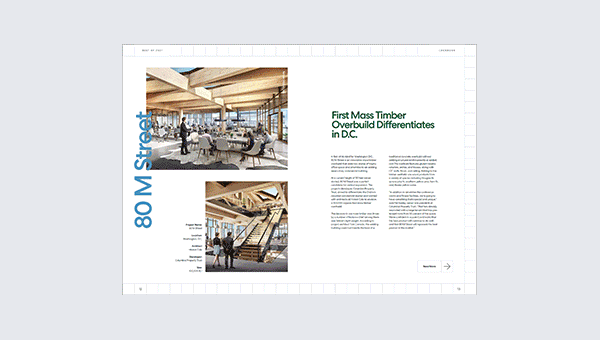
Think Wood wound down an eventful 2021 with a roundup of the year’s best content, covering trends reporting, expert insights, continuing education, and more. Think Wood’s Best of 2021 LookBook features nine cutting-edge projects that the campaign profiled throughout the year and that are sure to inspire designers and developers nationwide. Featured projects include a first-of-its-kind mass timber hotel in Austin, Texas, and an adaptive reuse of a 130-year-old warehouse in Milwaukee, Wisconsin. Since its launch in late December, the LookBook has been downloaded more than 1,900 times. Think Wood will continue to promote it via paid and organic social media and will distribute print copies at conferences and Think Wood Mobile Tour stops in 2022.
Think Wood also compiled and reshared some its highest performing content in its 2021: Year in Review blog. The steady flow of new content produced by Think Wood throughout 2021—including the Think Wood Mobile virtual tour, webinars, videos, project profiles, and blogs—enabled it to exceed its year-end performance targets for new database contacts and resource downloads, and constantly created opportunities for users to engage and continue on their journey toward designing and building with wood.
The campaign has a strategic editorial calendar for 2022 to reach even more specifiers with the powerful benefits of wood construction.
The AWC to Propose 15 Changes for Consideration in ICC 2021 Group B Process
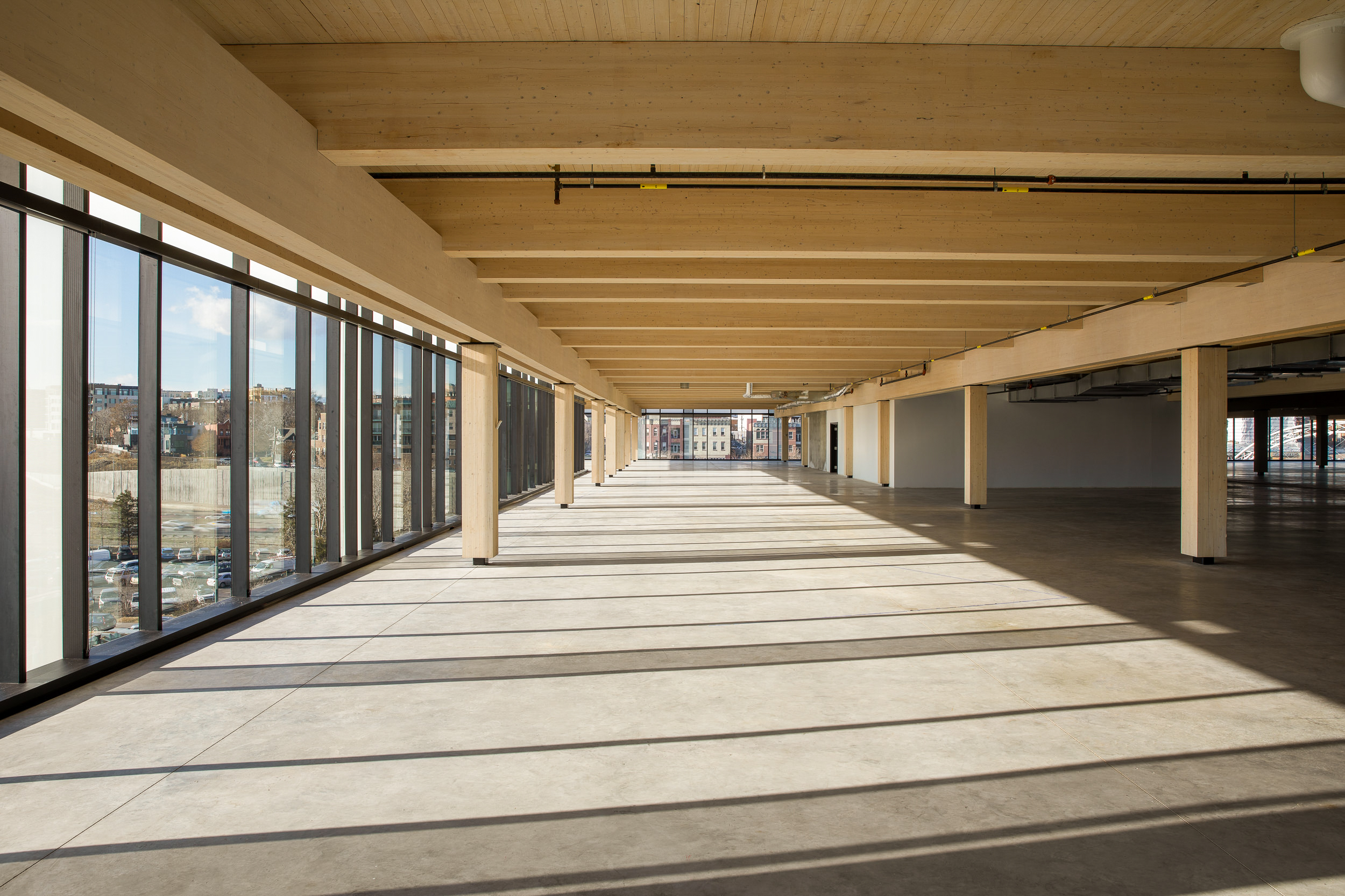
The International Code Council (ICC) 2021 Group B code development process has begun and will cover structural loads, special inspections, and the material chapters of the International Building Code. The American Wood Council (AWC) has developed 15 changes for consideration in Group B. Among these are proposals to:
- Clarify cross laminated timber (CLT) sizing terminology (i.e., actual versus nominal), which, if accepted, will prevent confusion and manufacturing delays because of design errors;
- Enable connections with fire-resistance ratings to be used in mass timber construction, thus avoiding unnecessary testing and associated costs; and
- Require fire-retardant-treated lumber manufacturers to consider all design value adjustments, ensuring proper structural design.
Concurrently, the AWC is also developing six proposed changes to the International Residential Code. These include proposals to add a new standard for determining equivalent fire performance of a 2″x10″ lumber and engineered wood product floor assembly and to update requirements for when a costly, water-resistive barrier must be part of accessory structure construction.
WoodWorks Finishes Strong in 2021
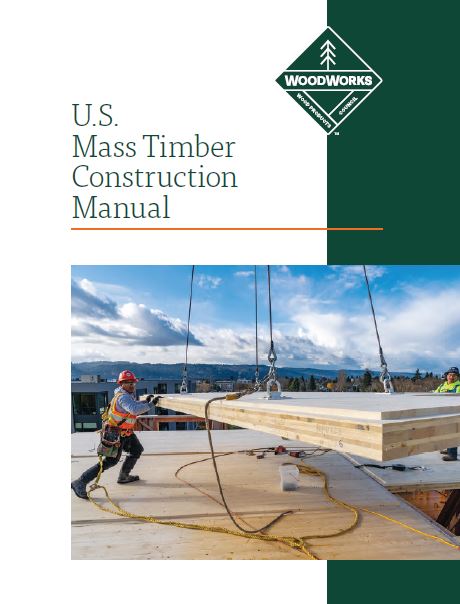
WoodWorks met its 2021 goal by delivering a total of 448 influenced and converted projects that went to construction—a 12% increase over 2020. WoodWorks also continued to adapt and innovate to share its technical expertise with target audiences in virtual and electronic formats. During the year, WoodWorks devoted particular attention to filling information gaps to support the widespread pursuit of mass timber, including through multiple new resources and publications, including the following:
Guides and Manuals
- Mass Timber Design Manual (developed jointly with Think Wood)
- S. Mass Timber Construction Manual
- S. Mass Timber Floor Vibration Design Guide
- Index of Mass Timber Connections
Solution Papers
- Taking the Guesswork Out of Mixed-Use Building Requirements
- Insurance for Mass Timber Construction: Assessing Risk and Providing Answers
- Mass Timber Connections Index: Optimal Connection Considerations
- An updated Tall Wood Series, featuring papers on concealed spaces, fire resistance, and shaft wall requirements
Case Studies
- The six-story mass timber District Office building
- A light-frame/mass timber hybrid office at Perce-Clearwater National Forest
Technical Support & Inspiration
- Ask an Expert technical tips
- Biophilic Design LookBook (developed jointly with Think Wood)
The AWC Adds Staff to Support Building Code Official Relations
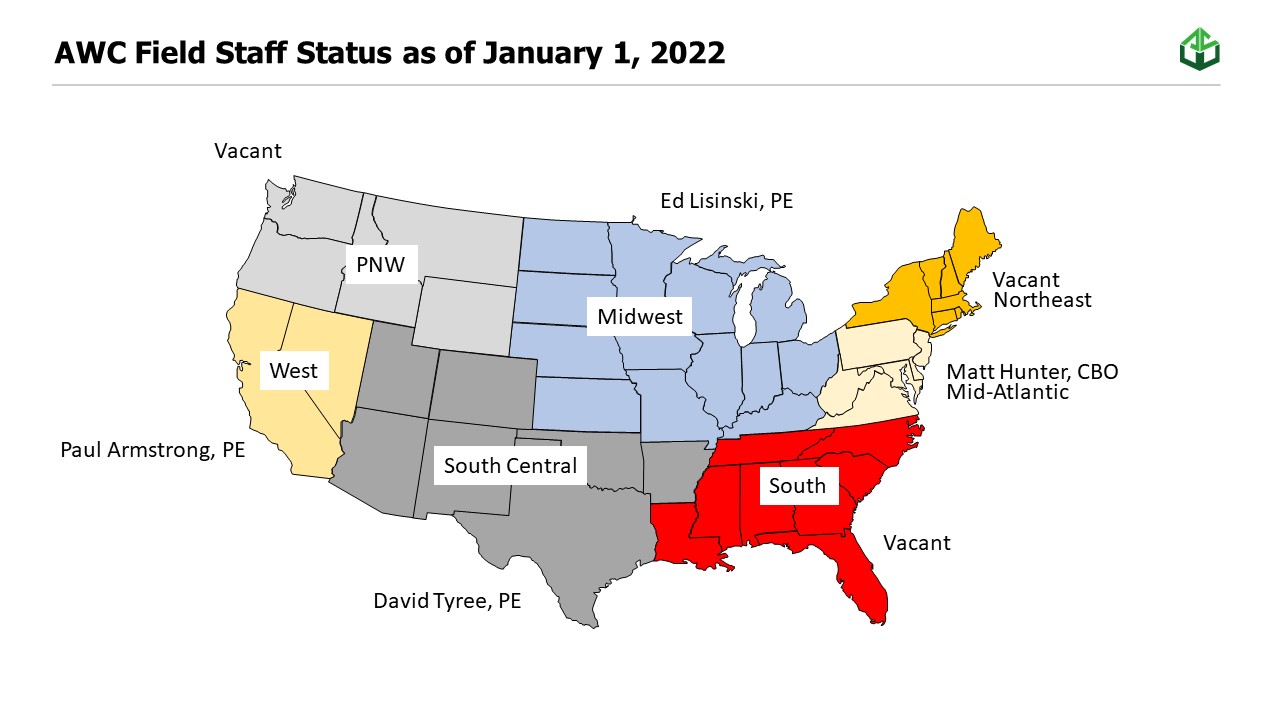
The AWC welcomed two highly experienced field staff members to its team this winter to broaden and deepen reach among building code officials and to support the code development process. The hires were made possible in part by increased funding of the AWC by the SLB.
Ed Lisinski, P.E., C.B.O., is the AWC’s new Midwest Regional Manager, Codes & Standards. Lisinski worked most recently as the director of the building inspection department of West Allis, Wisconsin; is a member of the ICC’s Structural Code Development Committee and the Building Membership Council; and has experience as a design engineer and plan reviewer.
Paul Armstrong, P.E., joined as the West Regional Manager, having previously worked for the International Conference of Building Officials, the Los Angeles Department of Building and Safety, as a contracted building official throughout California, and as a technical consultant to counter concrete industry marketing. Armstrong is currently the chair of the ICC Residential Building Code Development committee.
The AWC looks forward to leveraging Lisinski’s and Armstrong’s experience and expertise on behalf of the softwood lumber industry and reinforcing its reputation as a trusted resource for code officials.
Industry News
Hot Housing Market Expected in 2022

Based on interviews with housing market experts, CNBC is warning buyers to anticipate higher prices, continued low inventory, and fast turnarounds in 2022. CNBC quoted Zillow, which expects that home prices will rise by 11% in 2022, which, while slower than 2021, is still significant. In addition, interviewed experts expect that interest rates will rise, and ongoing market trends—and particularly affordability challenges caused by low inventory due in part to baby boomers staying in their homes longer—will combine to the detriment of young buyers in the marketplace.
Read more about these predictions here.
Google Parent Company to Spin Off Mass Timber Construction Firm

Alphabet, the parent company of Google and Sidewalk Labs, is spinning off Canopy Buildings as an independent company focused on mass timber construction. This move comes after Sidewalk Labs’ proposed large-scale mass timber Quayside project in Toronto was undone by strong public backlash amid concerns over Alphabet and Google’s data access and privacy practices.
The spinoff reflects Alphabet’s calculation that even if politically challenging and financially impracticable “smart city” concepts fail to take off, demand and markets for sustainable construction approaches such as mass timber will continue to grow.
Read more about this development here.
Canadian Study Analyzes Cost-Benefit, Optimization of Tall Wood Buildings
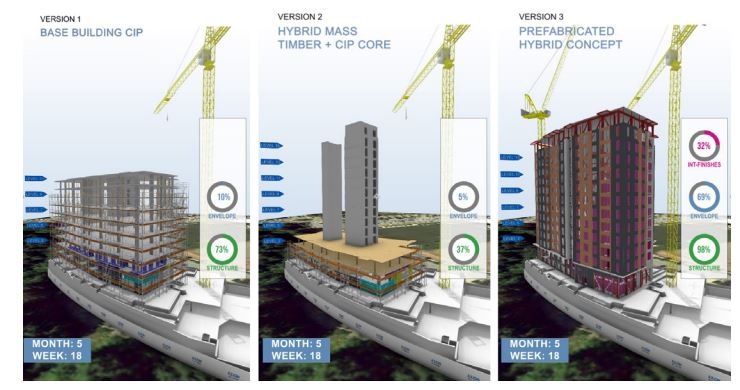
A Canadian study, conducted by WSP Canada, BTY Group, Axiom Builders, and ZGF, sought to understand the comparative costs and benefits of using mass timber products instead of other building materials, particularly in 12- to 18-story towers. Based on their findings, the authors put forward 10 recommendations to further tall mass timber development.
Recommendations include:
- Optimize designs to maximize the benefits of using mass timber and prefabrication methods, which will not necessarily lead to box-like building forms.
- Adopt modern methods of construction to amplify the inherent properties of prefabricated timber; and put in place moisture-management plans early in project planning.
- Focus on developing mass timber-steel hybrid buildings, which can maximize schedule savings.
- Prefabricate modular, lateral systems, and consider prefabricated exterior envelope systems.
- Adopt offsite prefabrication to realize faster construction times, precision finishes, and less waste.
The report also touches on the need to expand codes to be more receptive to tall mass timber and the ongoing need to educate insurers about mass timber building performance.
Read more and access the study report here.
Berkeley Study Asserts Multiple Values of Increased Forest Thinning

A new study from the University of California, Berkeley, compared the carbon emissions of California’s business-as-usual scenario of low levels of forest thinning against a scenario in which the state more aggressively thins and establishes a market for wood residues, ideally in the form of construction materials that permanently store carbon in buildings. The analysis asserts that California could sustainably manage 0.5 million acres of forest each year without increasing net carbon emissions.
The management methods put forth in the study are at odds with several current state policies, which prioritize investing in biomass and biofuels. However, study authors contend that focusing instead on new materials could help avoid emissions, mitigate fire risk, and provide a useful tool in the ongoing effort to increase the state’s affordable housing supply.
Read more about Berkeley’s research and conclusions here.
CLT Market Will Reach $2.7 Billion by 2028
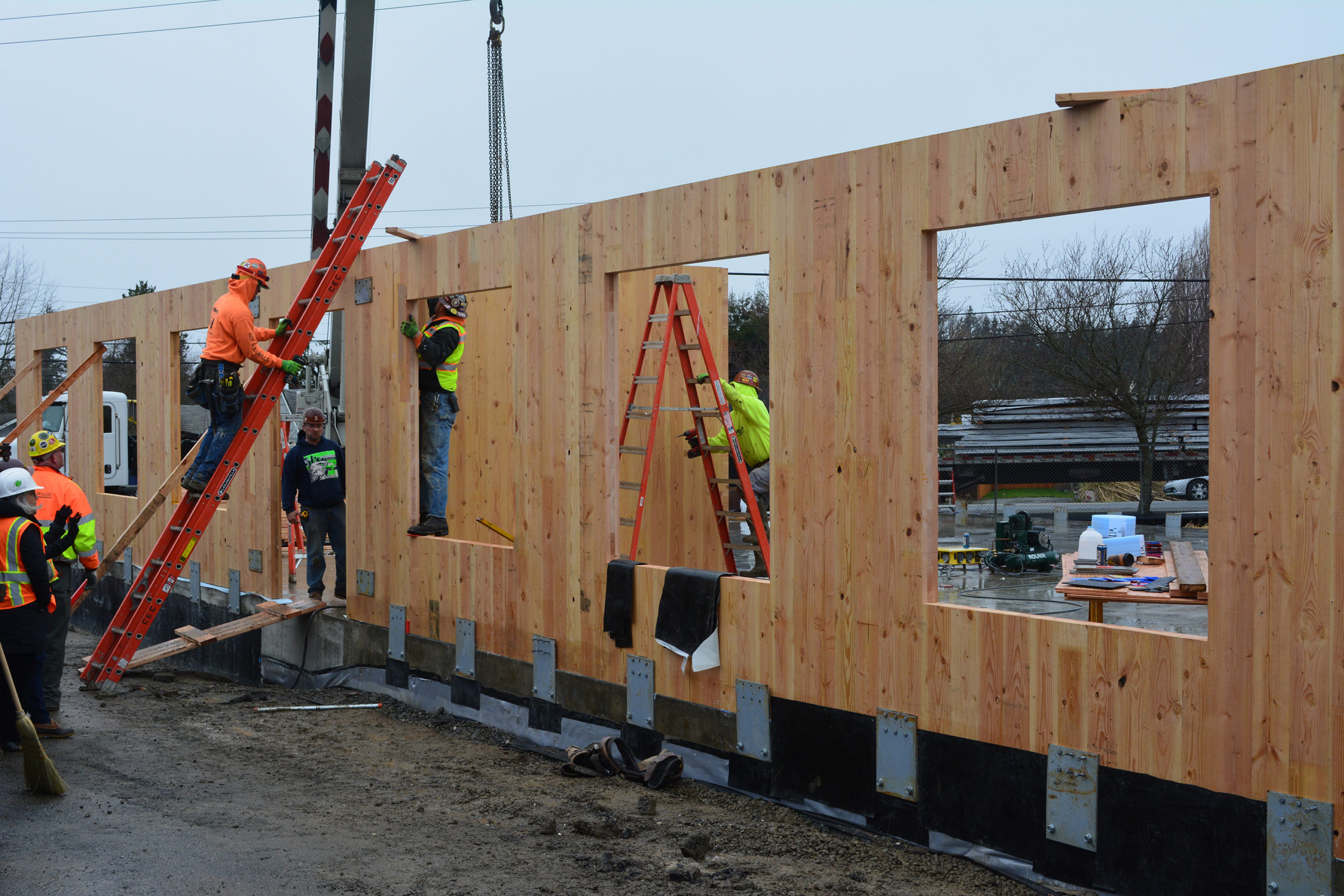
New market analysis by a U.S.-based market research firm, Grand View Research, predicts that the global CLT market will reach $2.7 billion by 2028, growing at a compound annual rate of 13.6% on average and fueled by increasing demand. Grand View expects that:
- Residential applications of CLT will grow annually by 14% from 2021 to 2028, driven by strong and growing consumer preference for sustainable building materials.
- Institutional applications will grow by 13.3% annually, with schools anchoring demand.
- Europe will continue as a worldwide leader in CLT, accounting for $1.5 billion of the total global market by 2028.
Read more about Grand View Research’s analysis here.
Tall Mass Timber Affordable Housing Proposed in San Jose
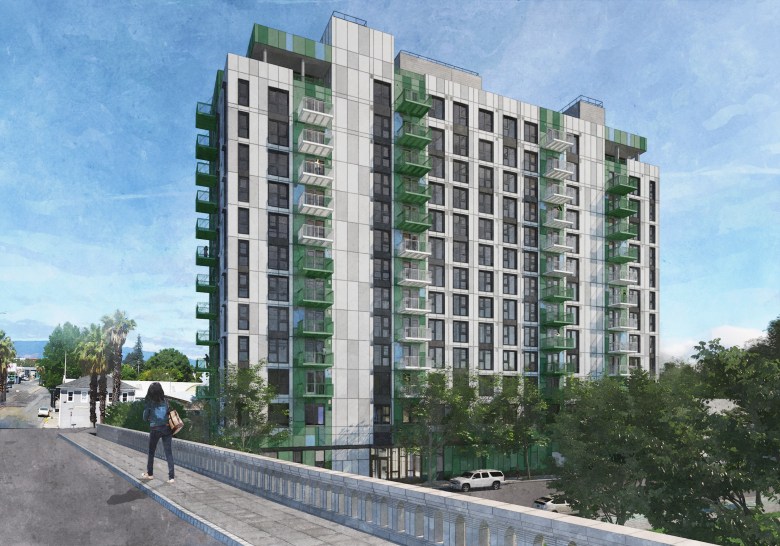
The affordable-housing nonprofit First Community Housing has announced plans for two 12-story residential towers in San Jose, California, in partnership with global firm Lendlease and designed by SERA Architects. Once completed, the project will be San Jose’s first mass timber high-rise project and will be located close to Google’s planned sustainability-minded Downtown West development.
The project’s 365 units will feature exposed timber and other biophilic design elements. First Community Housing is finalizing its financing now, and it, together with Lendlease, expects that the inclusion of mass timber will lead to a more favorable financing package because of the project’s sustainability benefits.
Read more about the proposed project here.
Insights on the Competition
Concrete Block Producers Approve CMU Checkoff

Last month, the U.S. Department of Commerce announced that concrete block producers approved the creation of the CMU checkoff in an effort to increase demand and reverse market share loss for concrete.
With the vote secured, concrete industry stakeholders will now launch implementation of the checkoff order, starting with forming a volunteer board of directors and development of a strategic plan. Stakeholders anticipate that the checkoff will direct investment toward several focal areas, including codes and standards, marketing, education and research, design support and education, and workforce recruitment.
Read the CMU checkoff’s press release announcing the vote results here.
Low-Carbon Concrete Used to Build Habitat for Humanity Home in Alabama
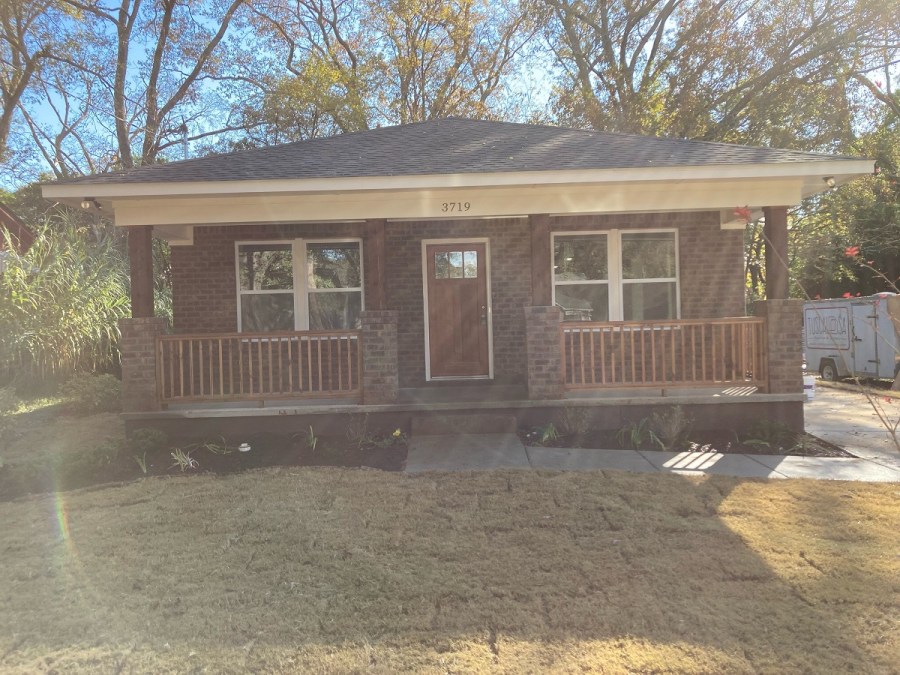
Habitat for Humanity of Tuscaloosa in Alabama has constructed a new home using concrete and concrete blocks that were cured with carbon dioxide captured from an Alabama Power plant, meaning the blocks will effectively sequester the carbon for the life of the building. The supplier, Blair Block, partnered with the National Carbon Capture Center (NCCC) to implement Los Angeles-based CarbonBuilt’s Reversa process to cure the concrete.
According to the National Ready Mix Concrete Association, another partner in the build, the combination of captured carbon and the reduced use of cement in the mix can reduce blocks’ carbon footprint by more than 60%.
In addition to the home’s carbon benefits, build partners also touted the structure’s resiliency to severe weather afforded by concrete construction.
Read more here.
Industry Resources
FEA’s Housing Dashboard
This housing dashboard is provided compliments of Forest Economic Advisors (FEA):
View the December Dashboard
View the January Dashboard
Virginia Tech’s Monthly Housing Report
This monthly housing commentary report is a free service of Virginia Tech and is intended to help one gauge future business activity in the U.S. housing market.
November 2021 Reports (released in January 2022)
Part A: November Housing Commentary
Part B: November Economic Conditions

